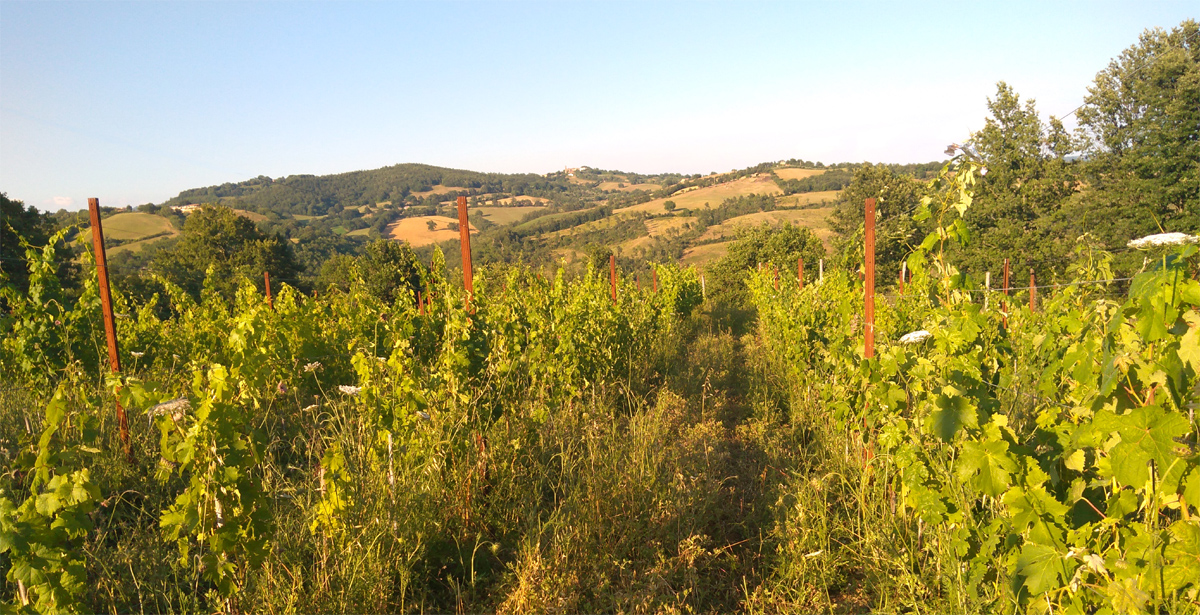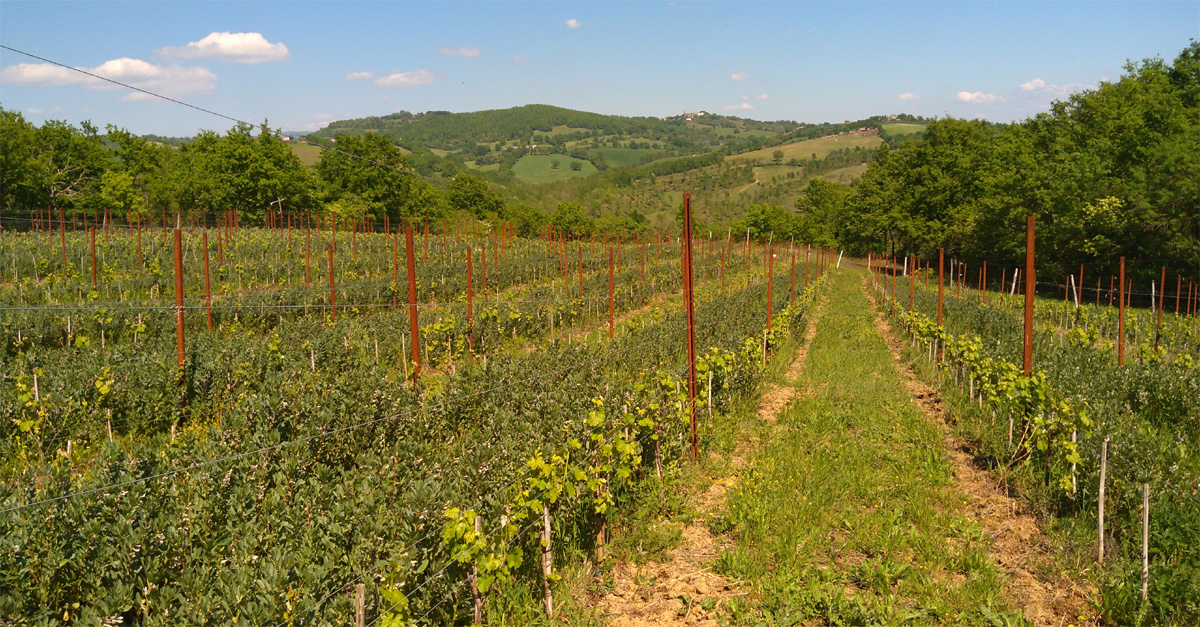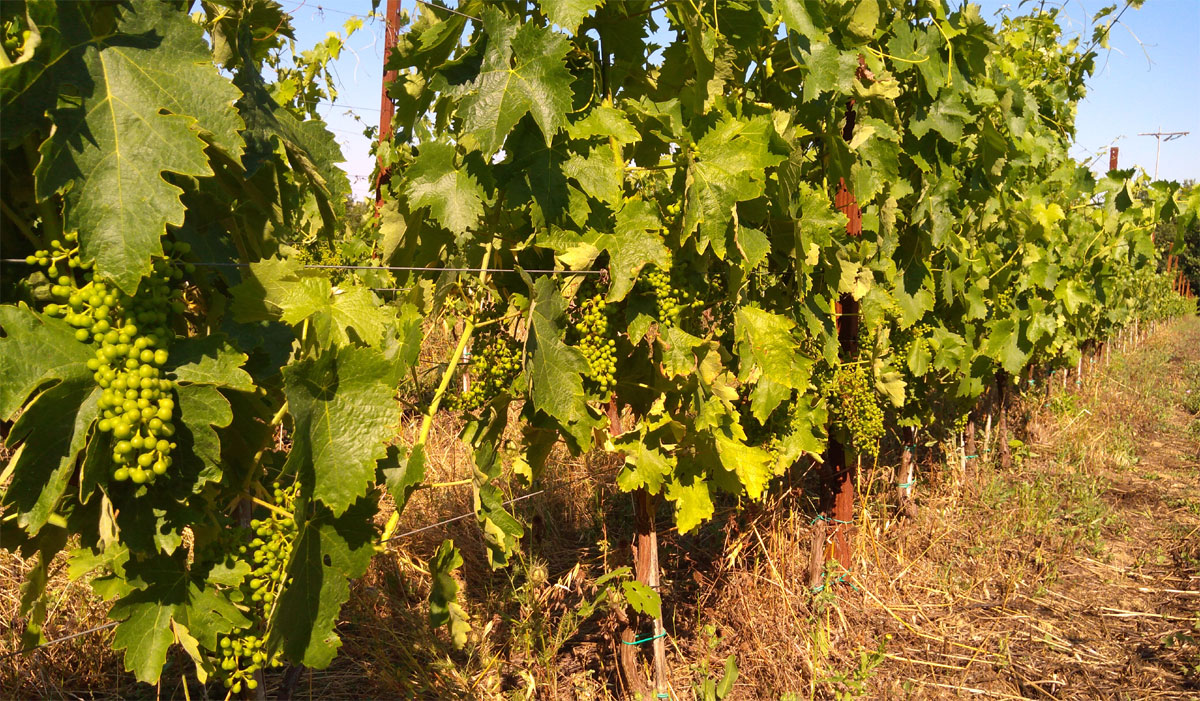This 1 ha vinyard has been planted in 2015 with several grape varieties
of the Maremma typical of the area of Pitigliano: Procanico, Clairette
(called locally Francesino because it originates in France), Nocchianello,
Riminese (called also Duropersico) and Verdello (which is a type of
Verdicchio). The field in the past has been used to grow wheat, barley,
spelt and clover. Before planting the soil had been prepared with
green manure and sub-soiling with a chisel plow. This vineyard is
located ca. 350m above sea level on a well balanced soil (shale with
silt and clay) sourrounded by mediterranean forest and meadows.
The new vine plants were obtained using the method of "mass selection"
by taking cuttings from vineyards of the Maremma. These cuttings were
then grafted onto rootstocks chosen for the particularities of the
soil. This traditional method for creating vine plants is different
from the nowadays usual "clonal selection", which allows the creation
of an infinite number of plants with identical genetic characteristics.
The crucial difference between a vineyard planted with clonal selection
and a vineyard planted by mass selection consists in the genetic diversity
mass selection brings about which reflects in the ability of the plants
to adapt better to climate and territory.
The vinyard is maintained following the principles of natural farming
with yearly green-manure. During springtime and summer they are treated
with minimal amounts of brimstone and copper-sulfate (using less than
25% of the quantity allowed in organic farming).
The Alicante and Ciliegiolo grapes of this vinyard are used to produce
the red wine Roccolina and arte part
of the roséwine Corindo.



